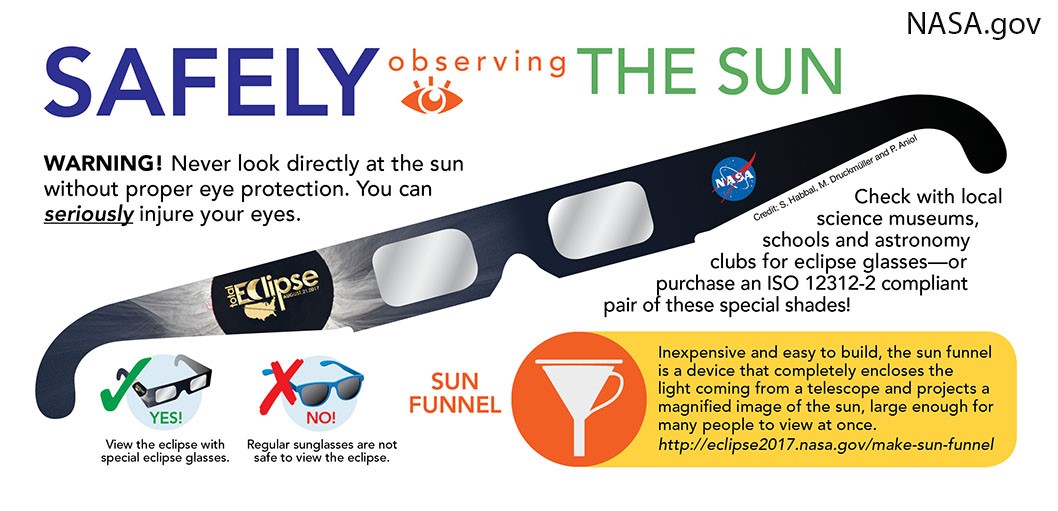
For the first time in 38 years, the United States will experience a total solar eclipse. In Orange County, we will experience a partial eclipse – 60 to 65 percent of the sun will be obscured by the moon at the peak of the event.
This is a unique opportunity to spark your child’s interest in science by showing how the moon rotates around our planet, and how Earth rotates around the sun. Below are links to resources and information about the eclipse, including how and when to watch the eclipse safely.
Safety First
- NASA has provided to science museums across the country special viewing glasses that meet all the safety standards for eclipse watching. These glasses have 100 percent ultra-violet protection and block out 99.99 percent of light from the sun. The chart below offers specifications other glasses must meet in order the be considered safe.

- The American Astronomical Society has a list of other safe eclipse glasses.
- Visit NASA’s webpage to learn how to make your own eclipse viewer. https://eclipse2017.nasa.gov/eclipse-101
- Always supervise children using solar filters.
- If you normally wear eyeglasses, keep them on. Put your eclipse glasses on over them, or hold your handheld viewer in front of them.
- Do not look at the uneclipsed or partially eclipsed sun through an unfiltered camera, telescope, binoculars or other optical device.
- Discovery Cube Orange County also has some videos with guidelines for building cardboard eclipse viewers, along with other information.
Additional Information to Help You Enjoy the Eclipse:
- In the greater Los Angeles area, the eclipse will begin at 9:06 a.m., with the peak at 10:21 a.m. and the conclusion at 11:45 a.m.
- The eclipse in this region will make it appear like an autumn dusk.
- You can watch online a live stream of the full eclipse on NASA’s web site.
- Visit NASA’s Eclipse 101 webpage, which has everything you’ll need to know about the eclipse and more. https://eclipse2017.nasa.gov/eclipse-101